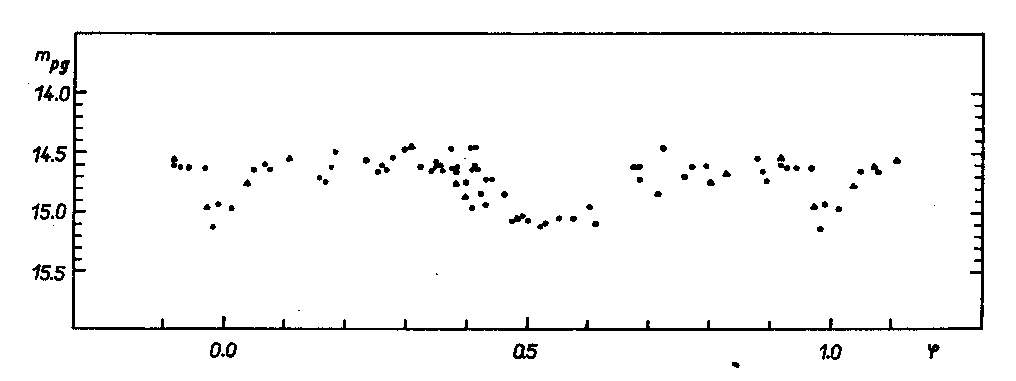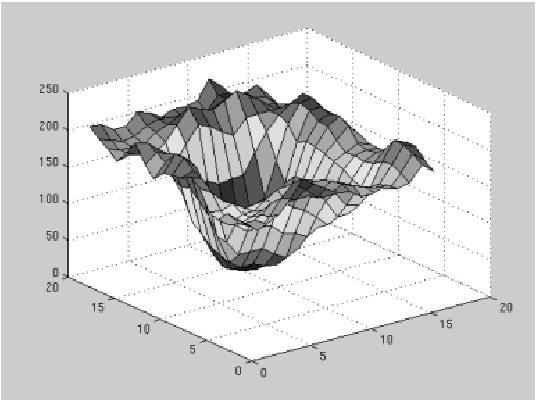Abstract
We report on the recent efforts to digitize the sky plate archives and
to use these data for various scientific projects including analyses of objects
observed by INTEGRAL such as blazars, cataclysmic variables, galactic X-ray sources,
and other objects. We also address and discuss the status of the development of
related algorithms and software programs. These data may easily provide very
long term monitoring over very extended time intervals (up to more than 100
years) with limiting magnitudes between 12 and 23.
|
|
Introduction
There are nearly 3 millions astronomical archival plates located at different
observatories. These plates represent a unique database for various scientific projects
including INTEGRAL.
These archives can easily provide thousands of exposures for any celestial
position, reaching monitoring intervals of up to few years of continuous monitoring -
i.e. tens of thousands of hours.
The recent efforts to digitize the plates and the corresponding software development
significantly facilitate the extraction of unique scientific data from archival records and
related reductions and analyses.
The photographic sky monitoring is available for more than 100 years. However,
only the recent development of photographic scanners and powerful computers allows an
efficient extraction of scientific data.
Some of the archives have very high quality plates achieving limiting magnitudes
of up to 20 … 23 (direct imaging) and /or 17….19 (spectral with objective prism).
|

The very rare inactive state orbital light curve of the X-ray binary Her
X-1/HZ Her based on measurements on Sonneberg Observatory astrograph plates.
The behaviour of the object in the inactive state can be studied only on
the archival plates, since the object is in active state already for about
50 years. The absorbing structure (disk) around the neutron star is clearly
visible in the curve.
|

The long-term evolution of AM Her on Sonneberg plates. Such long-term light
curves can be extracted only from archival plates.
|
Recent efforts: digitisation and automated evaluation
Some of the archives have devices for digitisation of plates
Some of the archives have started projects to develop high quality scanners
to convert all plates into files/CD ROMs (e.g. The Royal Observatory Brussels).
There are efforts to use these data for automated evaluation of objects on
the plates and creating their light curves
There are attempts to create an European Plate Centre in Brussels, Belgium (
the UDAPAC project, for more details see http://midasf.oma.be/~fido/project.html
All interested people can contact us at René Hudec
The photographic sky patrols still in operation
Two of the photographic sky patrols are still in operation, regularly taking
photographic patrol images every clear night. The Ondrejov all sky patrol operated
for monitoring of bright meteors has a sensitivity of mag 12 in the best case and
a very large sky coverage (full visible sky hemisphere). The Sonneberg sky patrol
is operated for variable stars simultaneously in two colours with limits 14 ... 15 but
a less extended sky coverage. Both programs exhibit suitable scanners to digitize
and to evaluate the patrol images.
|
|
Scientific use of archival astronomical plates - a valuable tool in modern astrophysics
Archival and sky patrol plates represent a valuable tool in investigations
of various types of high energy sources such as blazars/quasars, X-ray binaries,
X- and gamma-ray transients, etc. It is obvious that the automated evaluation
of sky patrol plates has large potential in:
providing extended monitoring intervals with good sampling,
allowing long-term evolution and changes to be studied
searching for optically variable AGNs-QSOs-blazars and other objects
providing their light curves with good sampling
searching for their flares
providing simultaneous and quasisimultaneous optical data for satellite campaigns, even back in time
monitoring of objects as base for proposals for ToO (Target of Opportunity) for satellite high energy observations
providing extended database for identification and classification of sources
The detection and investigation of very large amplitude flares from AGNs may serve as an example.
There is increasing evidence that some AGNs may exhibit very large amplitude
flares exceeding mag 10 (Hudec et al. 1997). These large flares are however rare so
very large fractions of monitoring times (of order of thousands hrs or more) are required
to detect them. This can be accessed easily on plates but hardly by other methods.
|

|

|
|
Recognizing the star images on archival plates by innovative flood algorithm |
|
Identification of high-energy sources
The recent high-energy satellites, especially those observing in X-rays,
provide a large number of detected sources. The identification of them is an
important but not easy task. Astronomical plate archives can help essentially.
The ROSAT catalogues list more than 200 000 X-ray sources detected and 2000 sources
with variability factor more than 3. A large fraction of faint X-ray sources is variable.
The use of deep archival sky patrol plates provides an important tool for identification
of especially variable X-ray sources since they provide large coverage in time and, in some
cases, colour information. So can archival plates be used to look for peculiar (mostly variable)
optical objects at the positions of X-ray sources.
Some collections (Hamburg, Sonneberg, Edinburgh,...) include also spectral plates taken
by objective prism. This can also provide important tool for object identification
and classification.
Some of the X-ray objects detected by recent analyses can be very easily rediscovered
and further studied - even back in the history - on high quality direct and spectral
archival plates.
|
|
The software development
So far, the data recorded on archival plates were accessible only
by special procedures. The recent wide digitisation of plate collections offers significantly
easier access by computers. However, there is still a gap between the digitised archive
and the scientific use. Special software is required to fill this gap.
We have developed new algorithms to access data on digitised plates
and have tested these techniques in trial sets of digitised plates from the Sonneberg
Observatory sky patrol archive.
The new algorithm is based on the flood method. This method,
applied to the digitised photographic plates, is able to reveal the star images for
further analyses. This method has been tested on a set of digitised Sonneberg Sky Patrol
plates with very promising results if compared with other methods. The flood method is
based on a similar idea as the watershed method and is reasonably simple and quick.
|
|
Plates and INTEGRAL
The importance of the plate archives for INTEGRAL is that for
objects optically brighter than mag 23, there is a chance that the light changes
of the object can be analysed over years and often even over decades. This can
provide valuable additional scientific data for complex analyses and for better
understanding of evolutions of the objects as well as of underlying physical processes.
The chance for availability of archival data increases with optical brightness of the object.
In addition, the photographic sky patrols still in operation
(Ondrejov and Sonneberg) can provide real-time coverages and pre-burst images for
GRBs detected by Integral.
|
|
The European initiative - the UDAPAC project
The recent UDAPAC Project represents the first effort to create an European
Plate Centre with related facilities, staff, software and expertise to extract scientific
information from archival astronomical plates. The UDAPAC plate centre is expected to be
located at the Royal Observatory in Brussels, Belgium, with many other scientists involved
(http://midasf.oma.be/~fido/ovid.html).
|
|
The North American Initiative at PARI
A new initiative at PARI (USA) is archival and digitization of astronomical
photographic plates. Observatories and universities are space limited and some seek a safe home
for the legacy left by so many astronomers. PARI provides space, infrastructure,
and Internet access. The goal is to make the archive a resource harnessed by present and
generations of astronomers. The proposed solution:
Safeguarding the information means minimizing the information loss
Purpose-built, rapid scanners are required
Laboratories will be equipped at PARI to digitize North American plates
PARI will also be developed as a long-term storage facility for North American plate archives
|
DOWNLOAD THE DOCUMENT |
BACK |
HOME
| |